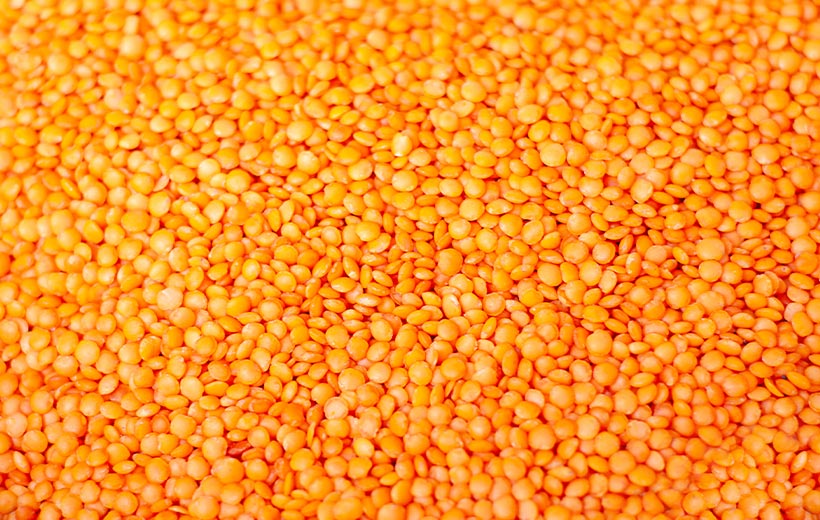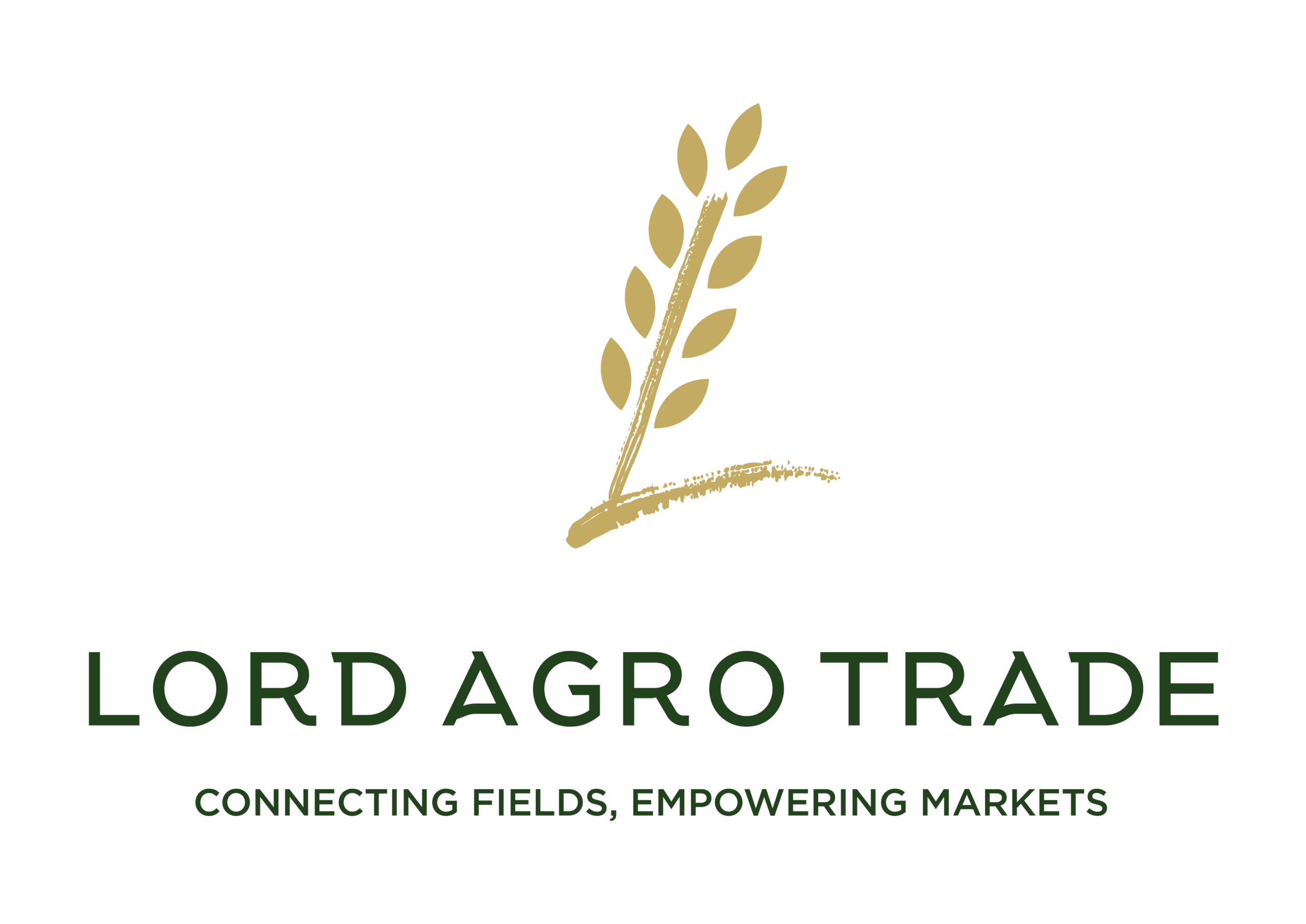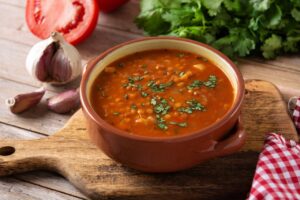- Products
- Red Lentils

Red Lentils | Red Split Lentils

Our company, Lord Agro, as one of the reliable firms in the export sector, plays a significant role in the global market for red lentils and red split lentils. These two types of lentils are valued as valuable items in international markets due to their nutritional benefits, culinary creativity, and global demand.
Red lentil or Masoor
The red lentil (Crimson), known as Lentils esculenta, is a whole red lentil with the outer skin removed and the inside of the seed healthy and without cracks. This product is orange-red in color and is full of protein. This type of lentil is cooked faster than other types.
Red lentils are derived from peeling brown lentils, making them essentially the same legume. The color of red lentils ranges from bright red to orange, becoming brighter over time. When cooked, they lose their shape and appear lighter in color compared to their raw form. Unlike their unpeeled type, red lentils are not bitter and have a sweet flavor, making them ideal for soups and purees. Due to the removal of their skin, these lentils cannot sprout. In both domestic and international markets, red lentils are available as whole lentils, known as “football” or “Masoor,” and split lentils, called “Masoor dahl.”
This type of lentil is used in many local and international dishes, including Middle Eastern, Indian, and Mediterranean cuisines. They are known for their quick cooking time and distinctive flavor, making them ideal for soups, stews, salads, and vegetarian dishes, appealing to consumers seeking plant-based protein sources and healthy foods.
Lord Agro confirms quality, reliability, and sustainability in the export of red lentils and red split lentils. The company utilizes advanced agricultural and processing technologies, paying exact attention to the selection and production of these lentils to ensure high-quality products. In logistics, Lord Agro uses a strong network of partners and distribution channels to deliver lentils to global markets efficiently. The company’s logistical skills ensure that the products are delivered on time and stored properly, keeping them fresh and healthy when they reach their destination.
Product Type | Whole Red Lentils (Crimson) or Masoor |
Place of Origin | Canada |
HS Code | 071340 |
Style | Dried |
Packaging | PPW Plain 45/50 Kg Bags |
Price per tonne | USD 810 ~ USD 830 |
Port | CFR Jebel Ali / Mersin |
MOQ | 5 FCL |
POL | Vancouver, CA |
Shipment Period | Sep / Nov |
Update Date | 08 Oct 2025t |
Product Type | Whole Red Lentils (Crimson) or Masoor |
Place of Origin | Canada |
HS Code | 071340 |
Style | Dried |
Packaging | PPW Plain 45/50 Kg Bags |
Price per tonne | USD 810 ~ USD 830 |
Port | CFR Jebel Ali / Mersin |
MOQ | 5 FCL |
POL | Vancouver, CA |
Shipment Period | Sep / Nov |
Update Date | 08 Oct 2025t |

Red split lentil or Masoor Dal
Red split lentils have red grains with split seeds, making them ideal for faster cooking and greater liquid absorption, which is extensively used in the food industry and the production of ready-to-eat meals. This type of lentil is perfect for combining dishes, making purees, and as essential ingredients in ready-to-eat foods and snacks. Due to its usefulness and quick cooking time, it is considered one of the most popular choices in global markets.
They have a nutty, sweet taste and are commonly seasoned with red pepper, black pepper, onion, garlic, and lemon juice for added flavor, especially in India for dishes like dal. The term “Dal” or “Dahl” originates from Indian languages and refers to legumes that have been split in half. This includes red lentils, black mung beans, chickpeas, and similar legumes. In Indian cuisine, split and peeled red or yellow lentils are commonly used in various soups and stews due to their appealing glaze and sweet, delicious taste.
why are these lentils split?
Firstly, splitting lentils reduces their cooking time.
Secondly, it enhances the glaze and improves the overall flavor of the dish.
Split red lentils, also known as Masoor dal, can be incorporated into soups, purees, diet salads, or served with rice and pasta.
Lord Agro’s focus on high-quality production, strict quality standards, sustainability, and efficient logistics has made it a top supplier of red and split red lentils in global markets. Their thorough approach ensures their products not only meet but exceed customer expectations, helping to build long-term relationships and promote growth in the international food industry.
Export of Red Lentils & Red Split Lentils by supplier
Red lentil whose scientific name is Lens culinaris, is a variety of lentils that have a mild, earthy taste and an intense orange-red color. Red lentils are unlike other types of lentils that are sometimes offered in whole butters as they are mostly sold in the form of splits which cut down on the cooking time. Therefore, they are especially useful for quick recipes. Lentils, over the centuries, and characterized by vibrance and depth, come from the rich land of the Near East and South Asia. Therefore, in these cultures, the lentils are not only the main dishes but represent diet in general. In these areas, lentils such as red ones are mostly called ‘masoor dal’ and are widely used in many traditional meals. In India, the dish masoor dal is mainly eaten a dal, which can be very simple but nourishing when cooked and eaten along with rice or flatbreads. Apart from South Asia, the lentils are now becoming a preferred option in main Middle Eastern, African, and Western kitchens because they have nutritional and versatile properties.
Red lentils have an amazing number of uses because they are so soft and flavorful. With a very short cooking time, they are a perfect choice for various dishes like soups, stews, salads, and purees. Red lentils are incredibly versatile as they can combine well with various spices and have a creamy texture. Therefore, they serve the role of a flexible ingredient in world cuisines. They are also, thanks to their high dietary content, a prominent element of vegetarian and vegan diets.
Types of red lentils
Red lentils come in two types: whole red lentils and split red lentils, each with features that make the cooking time, the texture, and the related recipes different. Two types of red lentils are included in the described category which is renowned for the nutritional benefits, the multiple uses, and the simplicity of making these lentils.
Whole Red Lentils vs. Split Red Lentils
Red lentil’s whole seeds are seeds with a skin that wrinkles are not removed which causes the grain to be a bit more earthy in taste and the solid texture usually is observed. The whole red lentils while cooking exhibit relatively more form, including retention of shape, compared to split red lentils and thus turn out to be very enviable for dishes in which a solid texture is preferred like rich soups or green salads. Whole red lentils feature the skin so they are usually able to be cooked for a longer period of time, about 20–30 minutes. Furthermore, they have somewhat a thick red cover which means they have a slightly higher content of dietary fiber.
On the other side, split red lentils that are without the hull are then cut into halves being lightweight, light-colored, and a 3-time faster cooking process. With the skin being destroyed, split red lentils are ready to eat in just ten to fifteen minutes and visitors can easily replace them with mashed potatoes. They are highly prescribed in meals since their added smoothness will be appreciated in soups, curries, and purees. Split red lentils possess a mild, slightly sweet taste to a range of spices and seasonings, and therefore, the fast preparation dishes incorporate them successfully.

Characteristics of Red Split Lentils
Lentils cooked till soft and soft, ready to be splashed with the biggest world – a supermarket, a go-shop – are loved because of sweet short cooking which is perfect for treating hunger. As they are the ones that become most supple and creamy at the very end of cooking, they are usually used to thicken soups and other dishes where a denser, thicker texture is needed. If not so delicate, they would be perfect as a medium between slightly intoxicating and completely alien intensity by combining them with other foods in a dish. They are extremely flexible as spices and herbs can be added to these legumes to create dishes that are typical of diverse regions, such as South Asia, one of the parts of the Middle East, and North Africa, and thus they have become a popular ingredient in the recipes of different culinary worlds. The red split lentils are usually served as a basis for dals, soups, and pottages, and they are often the favorite for people who are the seekers of the items that are healthy but one more thing, they need to be cooked fast.
Masoor Dal as a Specific Type of Red Lentil
“Masoor dal” is a word used by the people living in South Asia, especially in India, Pakistan, and Bangladesh, to refer to red lentils. In this regard, the word “dal” refers both to the lentil itself and the traditional dishes prepared with it. Masoor dal can be cooked with whole red lentils or split red lentils, though split red lentils are usually used for everyday cooking due to their faster cooking time and silky texture.
In addition to other traditional South Asian dishes, masoor dal is regularly cooked in the form of a simple spice-based lentil curry with a spice mix of cumin, turmeric, garlic, and ginger. The split lentils dissolve to a soft, stew-like consistency, which is served with rice, flatbreads, or other accompaniments. Masoor dal can be served plain, but it is, in most cases, up-scaled with a tempering (called “tadka”) of mustard seeds, curry leaves, onions, and tomatoes, which adds to the flavor.
Nutritional Profile and Health Benefits of Masoor Dal
Masoor dal is lauded not only for its use in cooking but also for its rich nutritional benefits. Masoor dal has a significant amount of protein in it for vegetarians and vegans, i.e., 9 grams per half-cup of cooked portion, and hence, it is a highly beneficial choice. It is not just high in fiber, which maintains good digestion, regulates blood glucose, and promotes a sense of fullness, but it also has numerous other benefits. Furthermore, masoor dal is a rich source of essential nutrients, such as iron, folate, magnesium, and potassium. Iron is of paramount importance in vegetarian diets to reduce anemia, while folate is the main driving factor in cellular activities and in the proper development of pregnant women.

Masoor dal has a low glycemic index, which makes it possible for individuals with diabetes and others to prevent or reduce the quick increase of blood glucose levels. Being highly fibrous and proteinaceous, it promotes satiety which is a key impetus in weight control. Besides, masoor dal is very low in both fat and calories, and, thus, it has become a great option for heart-healthy diets and helping individuals to keep up with a balanced, healthy diet.
Cultivation and Production of Red Lentils
Red lentils are largely produced by main regions that include countries like India, Canada, and Australia, respectively. Each of these regions has a climate that is specific to it and employs particular agricultural methods that are the determinants of the quality and the taste of lentils. Red lentils are the plants that are the most successful in moderate temperatures areas with low precipitation quantities during winter and are usually grown in regions that have transitional climates. On this count, countries such as Germany, France, and Italy have resorted to the development of red lentil production as the world consumption of these legumes gets ever more time-consuming because of their nutritional and culinary uses.
Major Regions for Red Lentil Cultivation
India: India is one of the largest producers and consumers of red lentils (or masoor dal as it is widely called) in the world. Red lentils constitute the basic food item of the cuisine in India, and if there is any export of them from the country that happens locally. The main lentil-growing states of India are Madhya Pradesh, Uttar Pradesh, Maharashtra, and West Bengal. Indian red lentils are usually small in size and have a unique earthy taste that most often is used in traditional dishes like dal and curries.
Canada: Canada is a country that stands out in the world regarding the export of red lentils from Saskatchewan, which is well known for its rich, fertile soil and excellent growing conditions. Canadian red lentils, which are more often than not larger in size than their Indian counterparts, have a mild and slightly sweet flavor. Canada’s high-tech agricultural technology and highly effective processing methods have made Canada’s red lentils very popular globally for their good quality and uniformity.
Australia: Australia, on the other hand, has been steadily capturing the market for red lentils in the world and its southern parts are key in that respect. The areas in South Australia and Victoria are optimal for lentil farming because they have a Mediterranean-like climate and good well-draining soils. Australian red lentils, on account of the fact that they are of good quality and have a firm texture, are well-liked worldwide and can be easily sent to any country
Growing, Harvesting, and Processing Red Lentils
The development of red lentils involves the soil preparation step and continues with the sowing of the seeds. In some areas, lentils are planted in fall, but in most places, they are planted in early spring (February-April) since they need cold environments for their optimal growth. Farmers ensure the soil is free of any obstructions and then plow the land, remove weeds, and sow the seeds, which should be shallow, as lentils have a short root system. Minimal irrigation is as instrumental to the lentil cultivating process as the crop’s resiliency. Thus, some farmers in semi-arid or arid zones are growing them. Moist and dry climate regions of Canada and Australia are prime locations for red lentils, although dry conditions and the availability of irrigation also occur.
Besides, lentils are also inspected in terms of size, color, and quality during the process of processing. The best quality lentils are those that are usually exported to places where the quality standards are strictly regulated. Red lentils are then wrapped and stashed in conditions that enable them to last longer, in order to avoid spoilage before being used in various destinations all over the world.
Quality, Flavor, and Texture Variations by Origin
Red lentils are remarkably different in quality, flavor, and texture in various regions:
Indian Red Lentils: The red lentils in India are also called earthy because of their distinct earthy flavor, which is also contributed by the fact that they are generally smaller in size. The texture is a bit groovier than the Canadian or Australian counterparts of this grain, thus they can be used for those Indian dishes that require the lentils to be cooked till a soft tearing consistency is achieved.
Canadian Red Lentils: A Canadian red lentil meal is nothing but a superfood because it contains high-protein, rainbow-colored lentils that are of uniform size, tasty, and tender. They withstand the heat for a little bit longer, which means they can also be used for applications that require lentils with perfect shapes. Canadian red lentils are usually utilized in soups and stews, where a softer, creamier texture is required without disturbing the shape.
Global Market and Export of Red Lentils
Export Trends of Red Lentils and Split Red Lentils
The export of red lentils and split red lentils has been growing due to the growing global demand, particularly from Asia, the Middle East, Europe, and parts of Africa. Red lentils, because of their fast cooking time and mild flavor, are preferred and used in many international cuisines, thus stimulating the rise of demand. In recent years, countries like India, Turkey, Egypt, and several other European Union countries have risen to be red lentil suppliers.
The international market for red lentils, including two types basically—whole red lentils and split red lentils—is on the rise as an increasing number of consumers mainly contribute to healthier diets. Besides the general statistics from the recent trade records, the demand for split lentils has been increasing due to their easy-to-cook quality and hence, they are used in many different dishes.
Key Exporting Countries
Regarding exporting countries, Canada is leading as one of the biggest suppliers of red lentils netting a significant portion of the world market. The majority of Canada’s lentil production is in Saskatchewan province, where the mild weather is ideal for pulse cultivation. Although India and Turkey are major producers of red lentils that they supply both domestically and internationally, they are not the main global exporters like Canada is.
Economic Importance
Red lentils are important to the agriculture sector and to the economy of numerous countries. In Canada, the lentil industry is a major part of the economy growing through the farm, harvesting, processing, and export sectors which are the jobs of thousands of people. This grain is a source of uniformity in the international trade of pulses. The key issue is the rising demand, which gives the producers a chance to increase agricultural exports and economic development.
final word
In summary, red lentils serve both as a high-value food source and a diverse one, as well as they are a major cause of economic growth in the countries that produce them. The growing world demand for plant-based proteins and the increase in the number of people who follow a vegetarian or vegan diet are the factors that will cause the importance of red lentils to spread even further.
Exports to overseas markets, however, are especially from major exporters like Canada which have a significant opportunity for producers of vegetable protein to take action and play a bigger role in the distribution of nutritious and sustainable food throughout the world. Other factors such as the continuous use of sustainable agriculture and the supply chain integration (along with the importance of quality) will also be the main factors in helping the red lentil market to grow and to have wider demand.
Ultimately, the producing and exporting countries can take over the global markets by following the strategy of quality, sustainability, and product diversity thus they can have an even better future in the red lentil trade.
